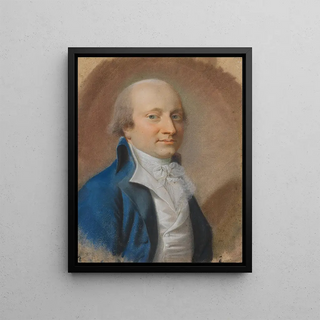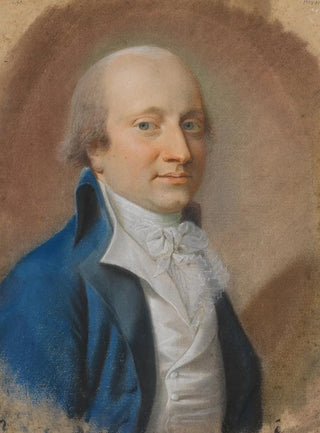Art print | Portrait of a gentleman, probably a Blücher - Jens Juel


View from behind

Frame (optional)
Art print Portrait of a Gentleman, Probably a Blücher - Jens Juel – Captivating Introduction
In the fascinating world of art, some works transcend time and space to capture the essence of an era, a culture, or a personality. The "Portrait of a Gentleman, Probably a Blücher" by Jens Juel is one of those creations that evoke admiration and curiosity. This painting, delicately evoking the refinement of 18th-century Danish nobility, invites the viewer to immerse themselves in a universe where elegance and savoir-vivre intertwine. Through this portrait, Juel does not merely depict an individual; he immortalizes an atmosphere, an identity, and a story.
Style and uniqueness of the work
Jens Juel's style is characterized by an impressive mastery of details and a subtle use of light. In this piece, the gentleman's face is bathed in a soft light that accentuates delicate features and the finesse of his expression. The chosen colors, both rich and nuanced, confer emotional depth to the painting. The artist manages to capture not only the physical appearance of his subject but also his character and social status. The gentleman's posture, slightly turned towards the viewer, creates an intimate, almost interactive connection, inviting each person to ponder his personal story. Juel, through his talent, succeeds in making this portrait much more than a simple representation; it becomes a true mirror of the soul.
The artist and his influence
Jens Juel, a prominent figure in Danish art, established himself on the European artistic scene of his time. Trained at the Royal Danish Academy of Fine Arts in Copenhagen, he developed a style that blends neoclassical and baroque influences, while incorporating elements unique to Scandinavian culture. His ability to grasp the psychology of his models made him a sought-after portraitist, appreciated by both nobility and the bourgeoisie. Juel also played a crucial role in disseminating the artistic ideas of the Romantic movement, inspiring many artists to explore the depth of human emotions through their works. His legacy endures, and the "Portrait of a Gentleman"

Matte finish

View from behind

Frame (optional)
Art print Portrait of a Gentleman, Probably a Blücher - Jens Juel – Captivating Introduction
In the fascinating world of art, some works transcend time and space to capture the essence of an era, a culture, or a personality. The "Portrait of a Gentleman, Probably a Blücher" by Jens Juel is one of those creations that evoke admiration and curiosity. This painting, delicately evoking the refinement of 18th-century Danish nobility, invites the viewer to immerse themselves in a universe where elegance and savoir-vivre intertwine. Through this portrait, Juel does not merely depict an individual; he immortalizes an atmosphere, an identity, and a story.
Style and uniqueness of the work
Jens Juel's style is characterized by an impressive mastery of details and a subtle use of light. In this piece, the gentleman's face is bathed in a soft light that accentuates delicate features and the finesse of his expression. The chosen colors, both rich and nuanced, confer emotional depth to the painting. The artist manages to capture not only the physical appearance of his subject but also his character and social status. The gentleman's posture, slightly turned towards the viewer, creates an intimate, almost interactive connection, inviting each person to ponder his personal story. Juel, through his talent, succeeds in making this portrait much more than a simple representation; it becomes a true mirror of the soul.
The artist and his influence
Jens Juel, a prominent figure in Danish art, established himself on the European artistic scene of his time. Trained at the Royal Danish Academy of Fine Arts in Copenhagen, he developed a style that blends neoclassical and baroque influences, while incorporating elements unique to Scandinavian culture. His ability to grasp the psychology of his models made him a sought-after portraitist, appreciated by both nobility and the bourgeoisie. Juel also played a crucial role in disseminating the artistic ideas of the Romantic movement, inspiring many artists to explore the depth of human emotions through their works. His legacy endures, and the "Portrait of a Gentleman"






